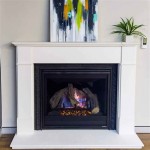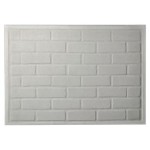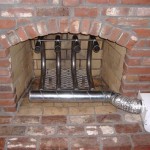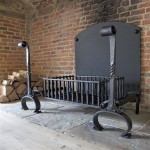Barn Wood Beam Fireplace Mantel: A Timeless Addition
A fireplace serves as a natural focal point within a living space, offering warmth, comfort, and a sense of ambiance. While the fireplace structure itself is fundamental, the mantel plays a crucial role in enhancing its aesthetic appeal. Among the various mantel options available, the barn wood beam fireplace mantel stands out as a distinct choice, characterized by its rustic charm, inherent durability, and unique historical narrative.
Barn wood, reclaimed from old barns, offers a textured and weathered appearance that is virtually impossible to replicate with newly milled lumber. Each beam tells a story of age, exposure to the elements, and the craftsmanship of a bygone era. This inherent character makes a barn wood beam mantel a valuable addition to homes seeking a touch of rustic elegance or a connection to the past.
The selection and installation of a barn wood beam fireplace mantel require careful consideration of several factors, including the dimensions of the fireplace, the desired aesthetic, and the structural integrity of the surrounding wall. A thorough understanding of these aspects is essential to ensure a successful and visually appealing outcome.
Authenticity and Character of Barn Wood Beams
The allure of a barn wood beam mantel lies primarily in its authenticity. Unlike wood that has been artificially distressed or aged, barn wood possesses a genuine patina developed over decades of exposure to natural elements. This patina manifests in various forms, including weathered surfaces, nail holes, saw marks, and subtle variations in color and texture. These imperfections, far from being flaws, contribute to the wood's unique character and historical significance.
The sourcing of barn wood is critical to maintaining its authenticity. Reputable suppliers typically reclaim wood from barns that are being decommissioned or dismantled due to age or structural instability. The process of reclamation involves carefully removing the wood beams, often by hand, to minimize damage and preserve their integrity. The recovered beams are then typically cleaned, treated for pests, and prepared for use in various applications, including fireplace mantels.
The species of wood used in old barns often varies depending on the region and the availability of local timber. Common wood species found in barn wood beams include oak, pine, hemlock, and chestnut. Each species possesses its own unique characteristics in terms of grain pattern, color, and density, contributing to the diversity of aesthetic options available for barn wood mantels.
The authenticity of a barn wood beam mantel can often be verified by examining its surface for telltale signs of age and use. These may include the presence of original saw marks from the tools used to mill the lumber, nail holes from past construction projects, and weathering patterns resulting from exposure to sun, rain, and wind. These features serve as tangible evidence of the wood's history and add to its overall appeal.
The color variations found in barn wood beams are also a key aspect of their character. Exposure to sunlight and the elements can cause the wood to fade, darken, or develop a silvery-gray patina. These natural color variations create a rich and complex visual texture that is highly sought after in rustic design. The color variations can also be influenced by the type of finish applied to the wood, which can enhance or maintain its natural appearance.
Design Considerations for Barn Wood Mantels
Integrating a barn wood beam mantel into a fireplace design requires careful consideration of several factors, including the overall style of the room, the dimensions of the fireplace, and the desired aesthetic. The mantel should complement the existing décor and create a harmonious balance between rustic charm and modern sensibilities.
The size and proportions of the barn wood beam are crucial to achieving a visually appealing outcome. A mantel that is too large or too small can disrupt the balance of the fireplace and detract from its overall aesthetic. The length of the mantel should typically extend beyond the width of the fireplace opening, providing a visual anchor and creating a sense of symmetry. The depth and height of the beam should be proportional to the size of the fireplace and the surrounding wall.
The placement of the barn wood beam mantel is another important design consideration. The mantel can be positioned directly above the fireplace opening, or it can be placed slightly higher to create a more dramatic effect. The height of the mantel should be determined by the overall proportions of the fireplace and the surrounding wall, as well as the desired aesthetic. A higher mantel can create a sense of grandeur, while a lower mantel can create a more intimate and cozy atmosphere.
The finish applied to the barn wood beam can significantly impact its appearance and durability. A variety of finishes are available, ranging from clear sealants that protect the wood without altering its natural color to stains and paints that can enhance or transform its appearance. The choice of finish should be based on the desired aesthetic and the level of protection required.
Considerations regarding the surrounding elements of the fireplace are also crucial. The material used for the fireplace surround, such as brick, stone, or tile, should complement the rustic character of the barn wood beam. The color palette of the surrounding wall and décor should also be carefully considered to ensure a harmonious and cohesive design. Accessories placed on the mantel, such as candles, artwork, or decorative objects, can further enhance its aesthetic appeal.
Lighting can also play a significant role in highlighting the beauty of a barn wood beam mantel. Strategically placed lighting fixtures can accentuate the wood's texture and color, creating a warm and inviting ambiance. Under-cabinet lighting can be used to illuminate the area below the mantel, while spotlights can be used to highlight specific features of the wood's surface.
Installation and Safety Considerations
The installation of a barn wood beam fireplace mantel requires careful attention to detail and adherence to safety guidelines. The weight of the beam, the structural integrity of the wall, and the proximity to the firebox must all be taken into account to ensure a safe and successful installation.
Before beginning the installation, it is essential to assess the structural integrity of the wall. The wall must be capable of supporting the weight of the barn wood beam, which can be substantial depending on its size and density. If the wall is not strong enough, it may be necessary to reinforce it with additional framing or support structures.
The method of attachment used to secure the barn wood beam to the wall is also critical. Several options are available, including heavy-duty brackets, steel rods, and concealed fasteners. The choice of attachment method should be based on the weight of the beam, the type of wall, and the desired aesthetic. It is essential to use fasteners that are specifically designed for the type of material being attached to, such as concrete, brick, or drywall.
When installing a barn wood beam mantel above a fireplace, it is crucial to maintain a safe distance between the beam and the firebox. Building codes typically specify minimum clearance requirements to prevent the wood from overheating and potentially catching fire. These clearance requirements may vary depending on the type of fireplace and the type of wood used for the mantel. It is essential to consult local building codes and regulations to ensure compliance.
The use of a heat shield is often recommended to protect the barn wood beam from excessive heat. A heat shield is a non-combustible barrier that is placed between the beam and the firebox, deflecting heat and preventing the wood from overheating. Heat shields are available in various materials, such as steel, aluminum, and ceramic, and can be easily installed behind the mantel.
Proper ventilation is also important to prevent the buildup of heat and moisture around the barn wood beam. Ensure that there is adequate airflow around the mantel to allow heat to dissipate and prevent condensation from forming. This can be achieved by providing adequate space between the mantel and the wall, as well as ensuring that the fireplace has proper venting.
It is highly recommended to consult with a qualified professional, such as a carpenter or contractor, to ensure that the barn wood beam mantel is installed safely and correctly. A professional will have the expertise and experience necessary to assess the structural integrity of the wall, select the appropriate attachment method, and ensure compliance with local building codes and regulations.
By carefully considering these design, installation, and safety considerations, a barn wood beam fireplace mantel can become a stunning and enduring focal point in any home, adding warmth, character, and a touch of historical charm.

Olde Wood 8 X Reclaimed Mantel Shelfhand Hewn 95 Long Teak Mantels Shelf

Fireplace Mantel Barn Beam Wooden 8 X Rough Hewn Rustic Wood

Mantel Barn Beam Wooden 7 X 9 Rough Hewn Fireplace Rustic Wood

Barnwood Fireplace Mantel The Collection

Wood Fireplace Mantels Reclaimed Barn

Simple European Farmhouse Barn Beam Fireplace Mantel Makeover Open Doors Hearts

Rough Sawn Reclaimed Wood Faux Beam Mantels

Fireplace Mantel Barn Beam Wooden 8 X Rough Hewn Rustic Wood

Barn Beam Mantel 6 X 8 Wooden Fireplace Mantle Rustic Wood

Resawn Reclaimed Wood Faux Beam Mantels
Related Posts








